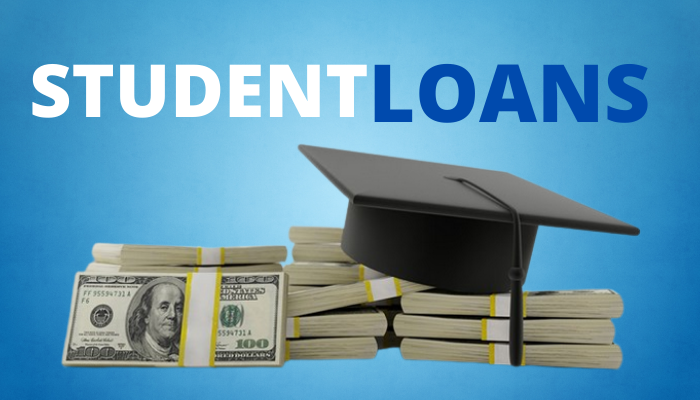On December 22, 2021, U.S. Department of Education extended the COVID-19 student loan repayment moratorium through May 1 of this year. The moratorium has been providing the following relief measures for eligible Federal student loan holders since the enactment of the Cares Act on March 27, 2020.
- The suspension of the requirement to make payments against outstanding loans,
- Eliminating the accrual of interest on loan balances during the moratorium, and
- The cessation of collections on defaulted loans.
Former college students with outstanding Federal loan balances should prepare for payments to resume during May by taking the following steps:
- Update the contact information in your profile on your loan servicer’s website and in your StudentAid.gov profile.
- Review your auto-debit enrollment or sign up for the first time. To do so, log in to your loan servicer’s website or contact your loan servicer directly.
- Check out the Loan Simulator on StudentAid.gov to find a repayment plan that meets your needs and goals or to decide whether to consolidate your loans.
- Consider applying for an Income-Driven Repayment (IDR) plan that can make your payments more affordable.
Restarting Payments
You’ll receive a billing statement at least 21 days before your first payment is due. The statement will include your payment amount and due date. For most borrowers, the interest rate will be the same as it was before the 0% interest period began, but some borrower’s interest rates will be changed. For example, your interest rate may have changed if you consolidated your loans during the moratorium.
Auto-debit enrollments will not restart automatically. You’ll need to agree to auto-debit option under prevailing terms and conditions. Refer to your status below to see what you need to do to remain on auto-debit.
- On auto-debit before March 13, 2020 – Your servicer will contact you before the payment pause ends to confirm whether you want to stay on auto-debit. If you do not respond to these messages, your servicer will cancel your auto-debit.
- Signed up for auto-debit after March 13, 2020 – Your auto-debit payments will start automatically on your first due date when payments begin again.
- Opted out of the payment pause and are signed up for auto-debit – Your auto-debit will continue as normal. You don’t have to take any action to stay on auto-debit.
- Have loan(s) in default – Your auto-debit options may be different. Contact ED’s Default Resolution Group to discuss your auto-debit options.
- Have Perkins Loans – Your servicer is cancelling all auto-debit enrollment on January 5, 2022. You will need to sign up after January 5, 2022, to get on auto-debit again.
Payment Amounts May Change
If you’re on a traditional program such as the Standard, Graduated, or Extended Repayment Plan, your loan servicer will recalculate your payment amount, if appropriate, when the moratorium ends. Your loan servicer will base your new payment amount on your current balance of principal plus accumulated interest and the remaining payment period.
It may take longer to repay your loan if you’re on a traditional repayment plan or an IDR plan. The traditional repayment plans are those named above. IDR plans include Revised Pay As You Earn Repayment (REPAYE); Pay As You Earn Repayment (PAYE); Income-Based Repayment (IBR); and Income-Contingent Repayment (ICR).
The moratorium interrupted your loan repayment schedule. You’ll still make payments for the same total number of months, but the date when you were scheduled to complete repaying your loan will have been extended. For example, if you began payments on a 10-year Standard Repayment Plan loan on January 1, 2018, you had 10 years from that date to repay your loan. Normally, you would have paid it off by December 31, 2028. But the moratorium doesn’t count as part of the 10-year period of repayment. If the payments were to pause for two years, the loan would be fully repaid by December 31, 2030.
Loan Forgiveness and Fees
There is no coronavirus-related loan forgiveness for Federal student loans. The Department of Education and your loan servicer are your best sources of information about student loan forgiveness plans.
Despite what you may be told by a third-party service provider, you can never legitimately be charged fees for help with Federal student aid of any kind. Contact your loan servicer for free help with questions or concerns about loan payments or applying for loan forgiveness. If you do obtain assistance from a third-party service provider, they must render it to you free of charge with no strings attached.
What’s Next?
In late February the Education Department announced that it would extend the moratorium on default collections through the Treasury Offset program for six months after May 1, to October 1, 2022). The Treasury Offset program allows the Department to intercept the Federal tax refunds of borrowers in default on their Federal student loans.
So far, the Department’s announcement of extended relief only applies to the Treasury Offset program for defaulted student loans. The extension doesn’t include other collections efforts against defaulted borrowers, nor does it apply to non-defaulted student loans.
As of mid-March, the Biden administration has not ruled out the possibility of further extension of the loan payment moratorium, but without assurance from the administration, student borrowers are advised to prepare to resume payments during May.


Recent Comments